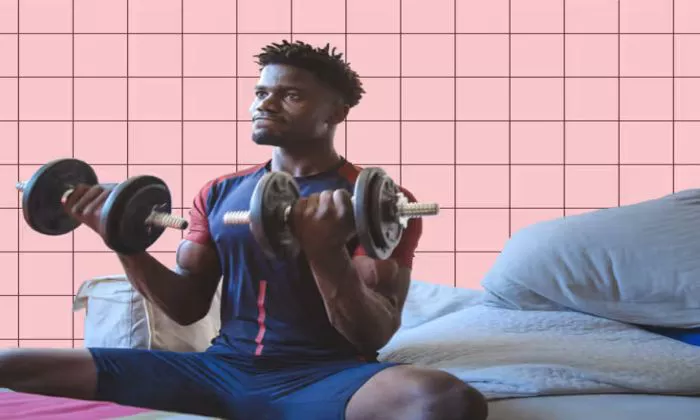If you find that your legs are big but lack definition, several factors could be contributing to this phenomenon. Understanding the reasons behind your leg size and lack of definition can help you develop a targeted approach to achieve the muscular definition you desire. In this comprehensive exploration, we’ll delve into potential causes and strategies to address them.
1. Genetics
Genetics play a significant role in determining your body’s muscle size, shape, and distribution. Some individuals naturally have larger muscles in certain areas, including the legs, due to genetic predispositions. While genetics influence your baseline muscle size, they do not determine muscle definition entirely. Even if you have genetically larger legs, you can still achieve greater definition through targeted training and other lifestyle factors.
2. Muscle Mass vs. Muscle Definition
Muscle Mass:
Building Muscle: If your legs are big but lack definition, it’s possible that you’ve focused primarily on building muscle mass without prioritizing muscle definition.
Resistance Training: Heavy resistance training and compound exercises like squats and leg presses can increase muscle size, contributing to larger legs.
Lack of Focus on Definition: If your training program hasn’t emphasized isolation exercises, high-repetition sets, or cardiovascular exercise, your muscles may lack the defined appearance you desire.
Muscle Definition:
Reducing Body Fat: Muscle definition becomes more apparent when there’s less fat covering the muscles. If your legs appear big but lack definition, reducing overall body fat percentage can help reveal the underlying musculature.
Isolation Exercises: Incorporating exercises that target specific leg muscles, such as lunges, leg extensions, and calf raises, can help enhance definition by isolating and strengthening individual muscle groups.
Cardiovascular Exercise: Including cardio workouts, particularly high-intensity interval training (HIIT), can aid in burning excess fat and improving muscle definition throughout the body, including the legs.
3. Training Approach
Overemphasis on Strength Training:
Heavy Lifting: While heavy lifting is effective for building muscle mass and strength, it may not always prioritize muscle definition.
Include Variety: Incorporate a variety of rep ranges and training modalities into your routine, including moderate to high repetitions, supersets, and drop sets, to stimulate muscle growth and enhance definition.
Focus on Form: Ensure proper form during exercises to effectively target the muscles and maximize engagement, which can contribute to better definition over time.
Neglecting Isolation Exercises:
Balance in Training: While compound exercises are essential for overall leg development, neglecting isolation exercises can result in disproportionate muscle growth and hinder definition.
Target Weak Areas: Identify specific areas of your legs that lack definition and incorporate targeted exercises to address these areas directly.
4. Nutrition and Diet
Caloric Surplus:
Muscle Growth: Consuming excess calories, particularly from carbohydrates and protein, can support muscle growth but may also lead to an increase in overall body fat if not balanced with appropriate exercise and caloric expenditure.
Caloric Deficit: To enhance muscle definition, consider adjusting your diet to create a caloric deficit, where you consume fewer calories than you expend. This can help reduce body fat while preserving muscle mass, resulting in a more defined physique.
Balanced Diet: Focus on consuming a balanced diet rich in lean protein, complex carbohydrates, healthy fats, and micronutrients to support muscle recovery, energy levels, and overall health.
Hydration:
Fluid Balance: Adequate hydration is essential for optimal muscle function, performance, and recovery. Drink plenty of water throughout the day to support hydration and muscle definition.
5. Hormonal Factors
Testosterone Levels:
Hormonal Influence: Testosterone plays a crucial role in muscle growth and development. Individuals with higher testosterone levels may have an easier time building muscle mass and achieving definition.
Consultation with Healthcare Professional: If you suspect hormonal imbalances may be affecting your muscle development, consult with a healthcare professional for evaluation and guidance.
6. Rest and Recovery
Overtraining:
Rest and Recovery: Insufficient rest and recovery can impede muscle growth and definition. Ensure you’re allowing adequate time for your muscles to recover between workouts and prioritizing quality sleep for optimal recovery and muscle repair.
Conclusion
If your legs are big but lack definition, it’s essential to assess various factors, including genetics, training approach, nutrition, and rest, to identify areas for improvement. By implementing a well-rounded training program that includes resistance training, isolation exercises, cardiovascular exercise, and a balanced diet, you can work towards enhancing muscle definition and achieving a more sculpted physique. Remember that consistency, patience, and a holistic approach are key to realizing your fitness goals. If you encounter challenges or need personalized guidance, consider consulting with a fitness professional or certified trainer to tailor a plan that suits your individual needs and preferences. With dedication and perseverance, you can overcome obstacles and make meaningful progress towards achieving the defined legs you desire.
Related Topics:
Belly Fat Battle: The Truth About Heat Belts


